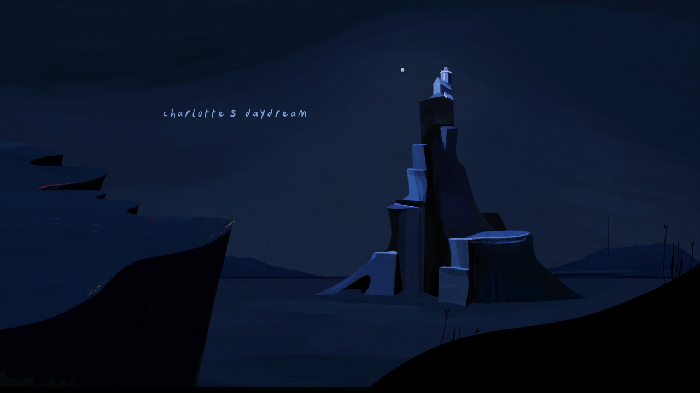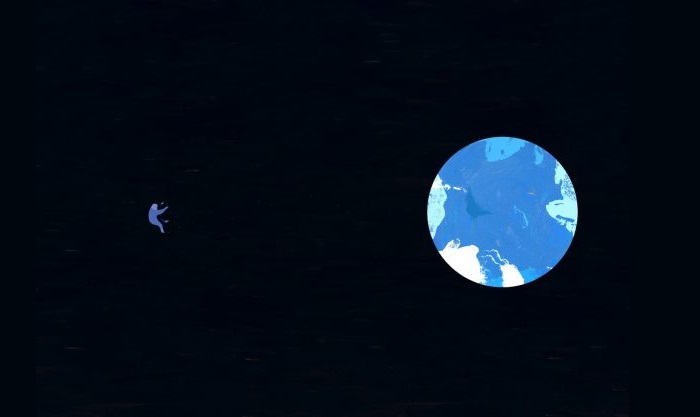When the first ever image of the Black Hole surfaced in April 2019, captured by NASA’s Messier 87 (M87), an elliptical galaxy some 55 million light-years from Earth, the entire world was awestruck at something so colossal, so mysteriously powerful.
A Black Hole is an extremely dense object from which no light can escape. Anything that comes within a black hole’s “event horizon”, will be consumed, never to re-emerge, because of the black hole’s unimaginably strong gravity. By its very nature, a black hole cannot be seen, but the hot disk of material that encircles it shines bright.

This image of the Black Hole became the source of inspiration for Oscar nominated Dutch animator Marlies van der Wel to create a thought provoking animated short, Charlotte’s Daydream, produced by Halal.
Charlotte’s Daydream seamlessly brought together two extremely different concepts – classical music and astrophysics. Inspired by pianist Pieter de Graaf’s song of the same name, Wel decided to take a reverse look at our planet from the Black Hole.
Shared Wel to Animation Xpress, “It was a conscious decision to blend astrophysics and classical music. When I heard the song, the combination of the floating piano play with the more embodied strings gave an image of a play with gravity and weightlessness, that of an astronaut leaving earth. At the time of developing the concept, the first picture of a Black Hole was released.
Being fascinated about it, I dived into the science behind it and dug through a lot of space articles, and in a funny way it made me think that it should be the other way around too, every country on earth collaborating to protect our planet. It made me think of inverting the situation; instead of observing a black hole from earth, displaying the earth from a black hole.”

She tried to give a simplified resemblance of the science behind it and that’s how the story of Charlotte’s Daydream was born as Wel “just wanted to instantly start drawing and animating a video with it.” She then made her character, Charlotte, an astronomer- jump into a black hole, to describe similar to the ‘The overview effect’ of seeing our lush blue planet in that endless black universe, a fragile ball of life to awaken a sense or feeling wanting to protect it.
The film exudes an incredibly peaceful and serene atmosphere of escaping time and reality, aided by the fact that the scenes are mostly quite motionless. The piano music enhances the sense of tranquillity.

Wel generally tends to play with different palette of tones and colours – for Jonas and the Sea it was mostly green and black, for Emily it was mainly yellow or autumnal colours, and for Charlotte’s Daydream, it’s different shades of blue. Revealing the reason behind it, she mentioned, “For this film I was in a phase in which I looked at post-impressionist paintings, mostly landscapes, like the ones of Simon Bussy and Félix Vallotton. I love how complete scenes and landscapes are set in one tint, making a few accents with contrasting colors. It fitted well with my plan of setting the story by night.”
She really went deep into astrophysics, having pictures of all the big earthly observatories on her pinboard at her studio. She even listened to Hawkins and saw all the Astrology TEDtalks, and visualised her animated short.
“After the concept phase, I started doing research for design. I was intrigued by Japanese stencil artists, using strong cut-out shapes, patterns and colors. I started sketching compositions based around a big black dot. After drawing all the shots with pencil and paper, I digitally coloured them. For the animation part, I wanted to develop my frame-by frame skills, and tried to animate most of the shots traditionally frame by frame,” added Wel.
Creating an animated film around space and explosive scientific discoveries isn’t a cakewalk. Charlotte’s Daydream therefore is a labour of love, passion and hard toil. The most challenging part for her, as she opened up further to our conversation, was to go through this phase of creative blankness which is a common phenomenon any any artist’s life.
“After my last film I found myself empty and it took a while to get the ideas streaming. I really made this project for my own cause; to develop certain skills and try new things with design. I wanted to create something more mature than my earlier works, completely by myself. After finishing Emily, I felt the need to dive back into the solitude with no teams or producers involved. I wanted to expand my own style and take time to investigate new areas and techniques. I planned to create this project in a few months, or weeks, but in the end it almost took a year. There was a certain point, when it all came together, the concept, style and technique, from that moment the frustrating struggle went into an automatic flow, and I finally reached the very satisfying point of creating in solitude,” she concluded.
By doing that, Wel didn’t really plan how to release it, or how to reach an audience. Graaf released Charlotte’s Daydream as his music video on YouTube and VEVO which garnered a decent amount of audience. This week an observatory’s website for astronomers, also posted the animated short as ‘AstroAlert’, which surely would have made Wel happy to be able to transcend different fields of art, music and science. Such intriguing animated content about conserving our planet before it’s too late, should reach out to as many eyeballs as possible.
